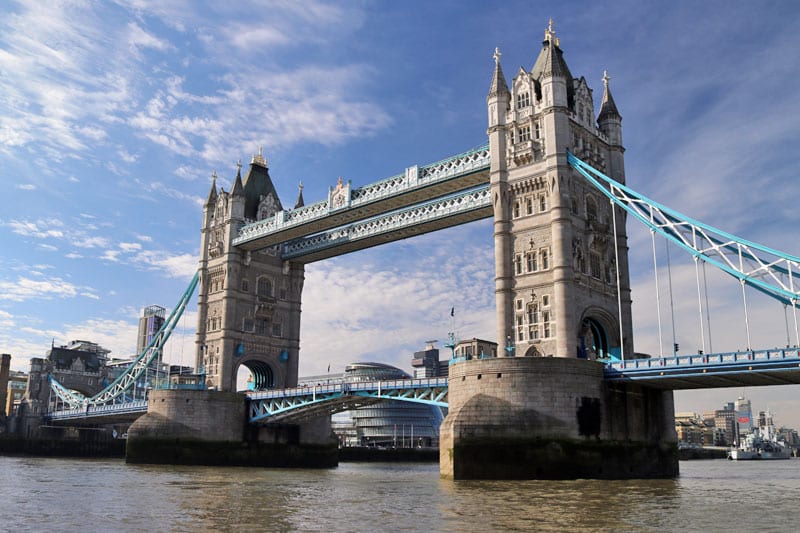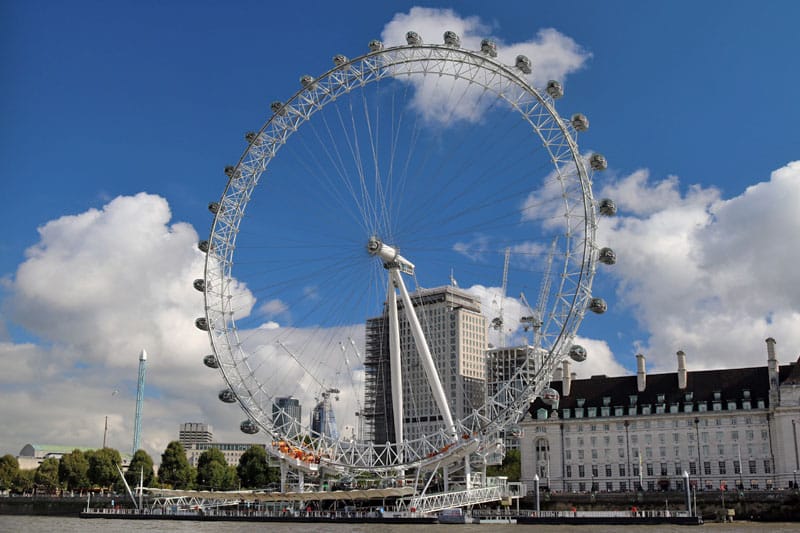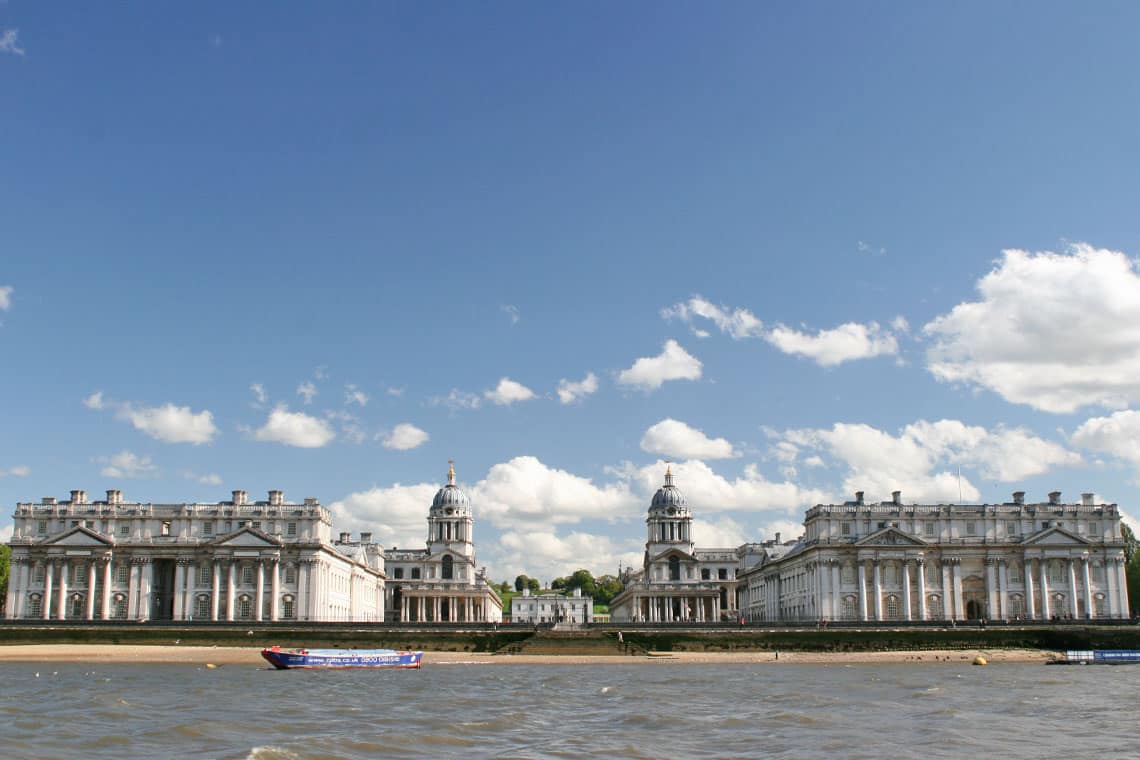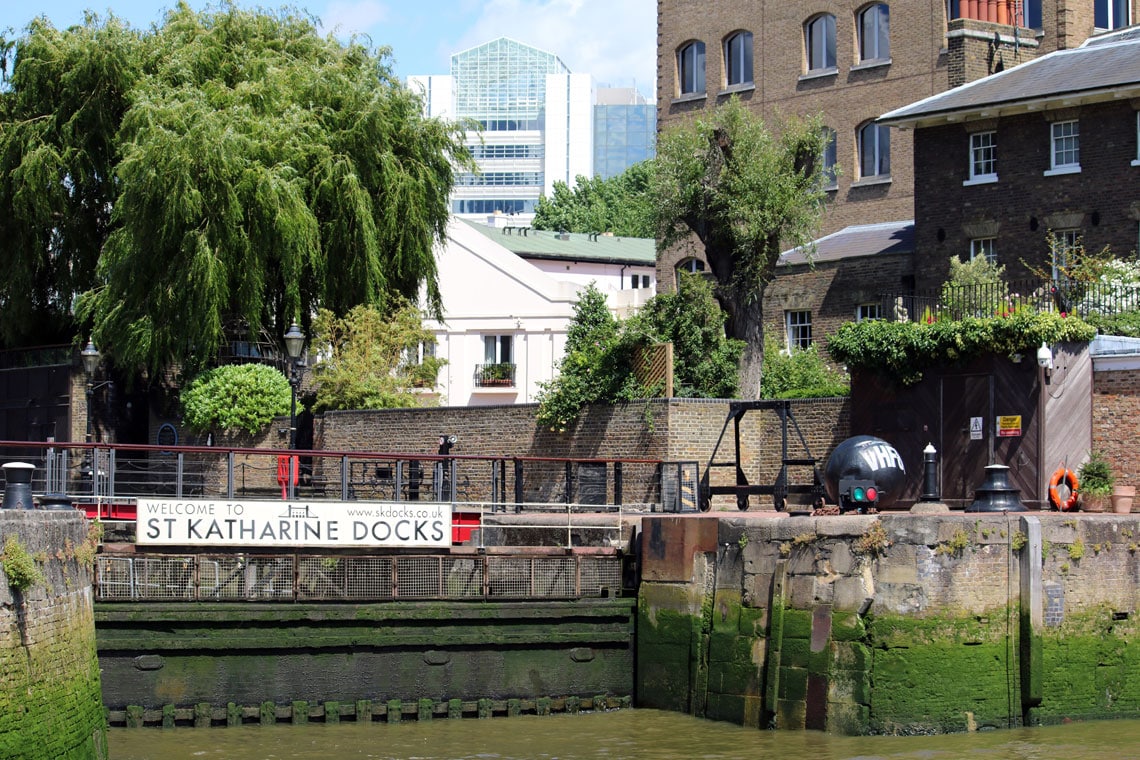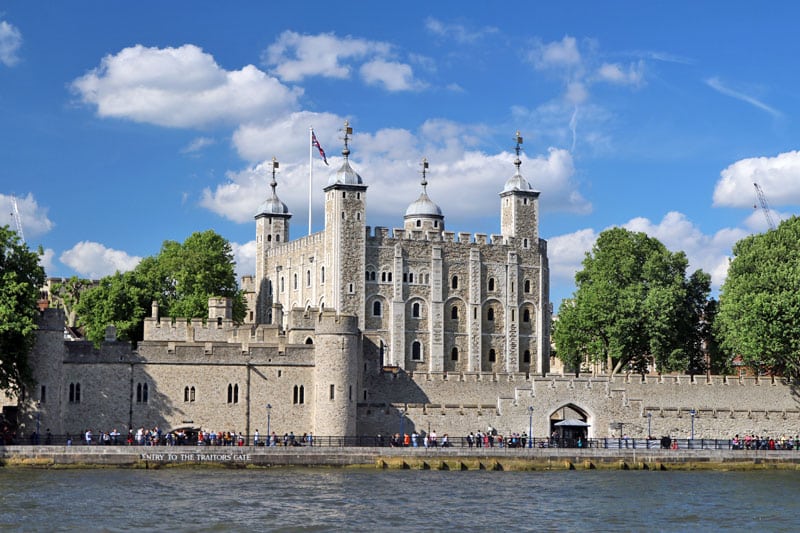
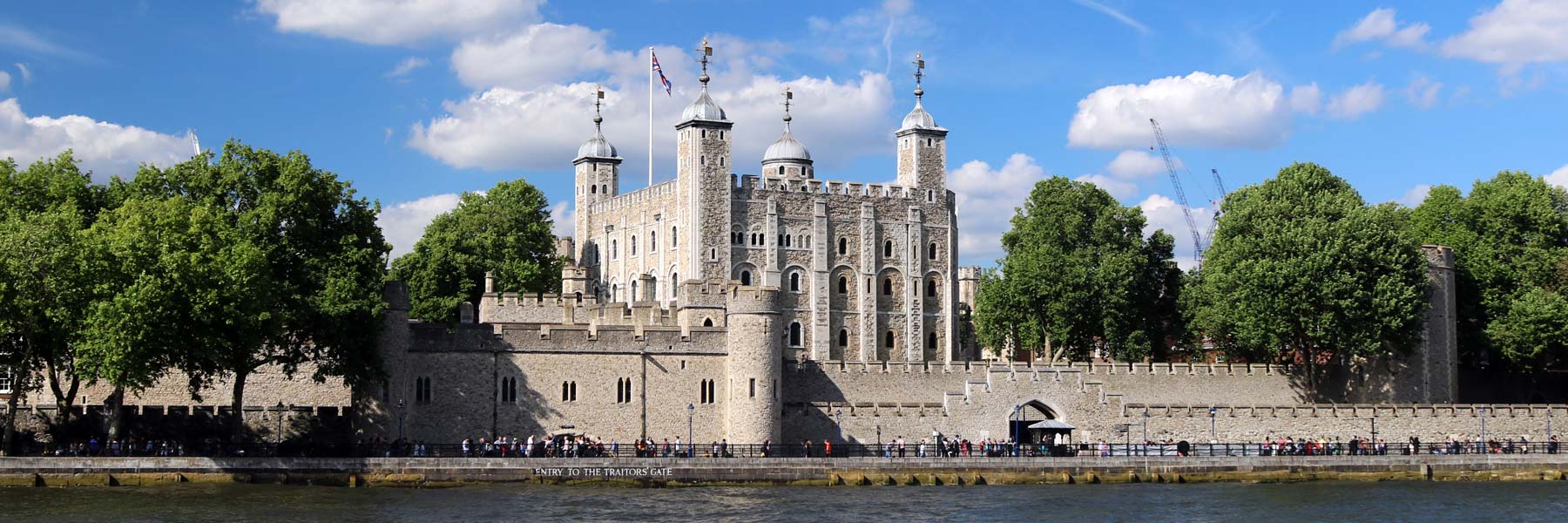
La torre de Londres
La torre de Londres toma su nombre de la Torre Blanca, que fue construida alrededor de 1078 por Guillermo el Conquistador. Durante los últimos 900 años, la Torre de Londres ha servido para varios usos, incluyendo una fortaleza, armería, palacio real, casa de moneda real, tesorería, casa de fieras, prisión y, más recientemente, el hogar de las joyas de la corona. La Torre está custodiada por los Guardianes Yeoman que fueron formados por el Rey Enrique VII en 1485.
The Norman Conquest
The Tower of London’s origins start with the Norman Conquest of England. After Edward the Confessor died childless in 1066 England was plunged into a succession crisis. King Edward’s brother in law Harold Godwinson was crowned King Harold II on the 6th January 1066. Harold was the first king to be coronated in Westminster Abbey which had been constructed by Edward the Confessor & consecrated on the 28th December 1065, only eight days before Edward’s death. Harold’s succesion was contested by King Harald Hardrada of Norway who invaded England in August 1066. Hardrada’s army burned the town of Scarborough to the ground & conquered the city of York before they were defeated by Harold II’s forces on the 24th September at the Battle of Stamford Bridge.
William Duke of Normandy contested Harold’s claim to the throne & claimed that the late King Edward had promised the throne to him instead. William prepared a large invasion force & landed in Pevensey, Sussex on the 28th September. King Harold’s army was weakened from the battle at Stamford Bridge & had to quickly march South to meet the Norman invasion force. After arriving near Hastings Harold’s army set up defence positions on Senlac Hill (present day Battle in East Sussex) on the 14th October.
Little is known of the events of the Battle of Hastings but it is generally agreed that William marched his army from their Norman fortifications to meet the English army. The battle commenced at around 09:00 & lasted for most of the day (a long battle by medieval standards). The decisive event of the battle was the death of King Harold although it is unknown how the King was actually killed. Some say he was killed by an arrow through the eye whereas other sources claim he was killed by Norman knights. The Norman victory at Hastings marked the end of Saxon rule over England, Norman Kings would reign for the next 88 years.
Click the link below to visit Historic Royal Palaces’ website & learn more about the Tower of London’s rich history.
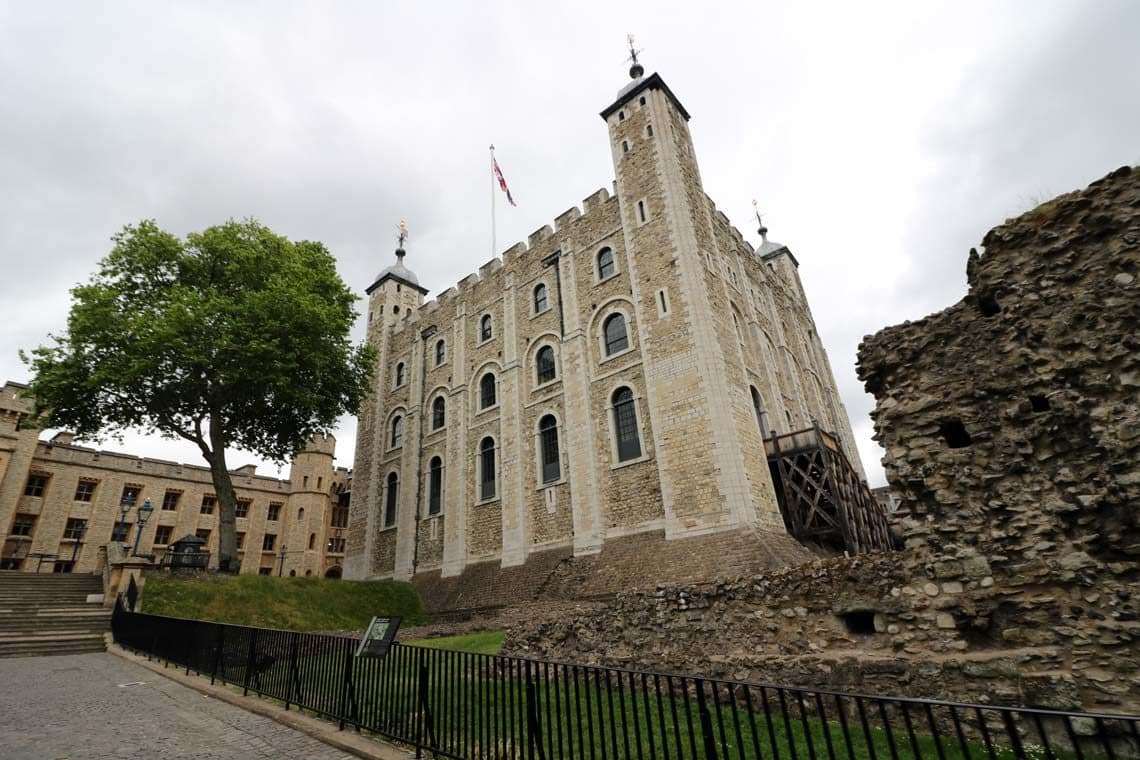

The White Tower, constructed by Gundulf Bishop of Rochester


Tower Green & The Scaffold Site
Explore the Tower of London
About the White Tower
The White Tower
William Duke of Normany was crowned King William I on the 25th December 1066 at Westminster Abbey. King William quelled numerous rebellions during his reign & built over 80 castles to strengthen his control over the English. The most famous of William’s castles would become the Tower of London. The original Norman fortress in London was a timber structure utilising the old Roman walls & the River Thames. The stone White Tower was started in 1078 & was designed by Gundolf, Bishop of Rochester. Gundolf was a Norman monk who travelled from Normandy to England after the conquest. Gundof was appointed Bishop of Rochester in 1075 & is also responsible for the castles at Rochester & Colchester.
Painted Hall Highlights
A

The White Tower

The White Tower
Tower Green & Scaffold Site
About Tower Green
Chapel Highlights
A

Tower Green

Tower Green
The Waterloo Block & The Crown Regalia (The Crown Jewels)
About the Crown Regalia
The Crown Regalia (more commonly known as The Crown Jewels) have been used at the coronations of the Kings & Queens of England since the accession of Charles II in 1661 however the oldest items in the regalia date from as early as 1150. As a working collection the Crown Jewels have fascinated the public since they were first displayed in 1669 however in 1671 Colonel Thomas Blood attempted to steal the jewels from the Tower.
Thomas Blood was an Irishman who had fought for Charles I during the English Civil War but after realising the Parliamentarian forces were likely to win the war Blood changed sides. After the restoration of the monarchy in 1660 Blood & his family fled to Ireland. Blood returned to England in 1670 & after a second failed attempt to assassinate Lord Ormonde he decided to steal the crown jewels.
Blood visited the Tower of London in 1771 disguised as a Parson & he befriended the Keeper of the Jewels, Talbot Edwards. After a number of visits to the Edwards family Blood attempted to steal the jewels on the 9th May 1671. Edwards was bound & stabbed by Blood who with his conspirators attempted to steal the crown & orb but were caught while trying to flee the Tower.
Skittle Alley Highlights
A

The Waterloo Block, Tower of London

The Waterloo Block, Tower of London
Tower of London Location
Travel to or From the Tower of London by Boat
Thames River Sightseeing
Una visita a Londres no está completa sin un crucero por el río Támesis. Thames River Sightseeing opera servicios regulares desde seis muelles en el río Támesis, incluidos embarcadero Westminster, embarcadero Embankment, Tower Bridge Quay (Embarcadero St. Katharine) y embarcadero Greenwich. Haga un crucero turístico por el río Támesis 361 días al año y opere una flota de embarcaciones para todo clima con amplias cubiertas abiertas perfectas para los meses de verano y salones con calefacción con ventanas panorámicas para los meses más fríos. Los barcos van desde barcos de pasajeros más tradicionales del río Támesis (London Rose) a embarcaciones más modernas construidas expresamente para el río Támesis (Thomas Doggett). Un crucero entre Westminster y Tower Bridge Quay dura solo 30-40 minutos y pasa por numerosos lugares de interés de Londres, incluido el Palacio Nuevo de Westminster (Casas del Parlamento), the London Eye, the Tower of London, Tower Bridge, the Shard, London Bridge & Tower Bridge.
Passengers can embark at Westminster Pier, Embankment Pier, Festival Pier, Bankside Pier, Tower Bridge Quay or Greenwich & take advantage of a range of ticketing options. Single tickets are suited for day trippers or passengers travelling in or out of London & return tickets allow passengers to disembark & explore before joining a return sailing later the same day. A 2 Day River Pass is the perfect option for anyone visiting London over multiple days. A River Pass allows unlimited travel on our services for just £21.00 per adult, a family River Pass is just £42.00 (para 2 adultos + 3 niños).
Thames River Sightseeing también ofrece excelentes tarifas y descuentos para grupos que son perfectos para familias, compañías de viajes o comercio de viajes. Los baños y una audioguía multilingüe están disponibles en todos los viajes. La audioguía multilingüe es un comentario informativo disponible a través de nuestro Wi-Fi a bordo en inglés, francés, alemán, italiano, español o mandarín. (Dispositivo inteligente y auriculares no se proporcionan, Leer Más).
Cruises to or from Tower Bridge Quay
Viscount Cruises » Landmarks » Tower of London
Historic Royal Palaces was established in 1989 to care for five unoccupied royal palaces: The Tower of London, Hampton Court Palace, The Banqueting House, Kensington Palace & Kew Palace. Historic Royal Palaces became an official charity by Royal Charter on the 1st April 1998 & took over management of Hillsborough Castle in Northern Ireland on 1st April 2014.
All six royal palaces are open to the public & are brought to life through tours, historic events & exhibitions such as the famous Ceremony of the Keys at the Tower of London or architecture tours at The Banqueting House.
Viscount Cruises » Landmarks » Tower of London

